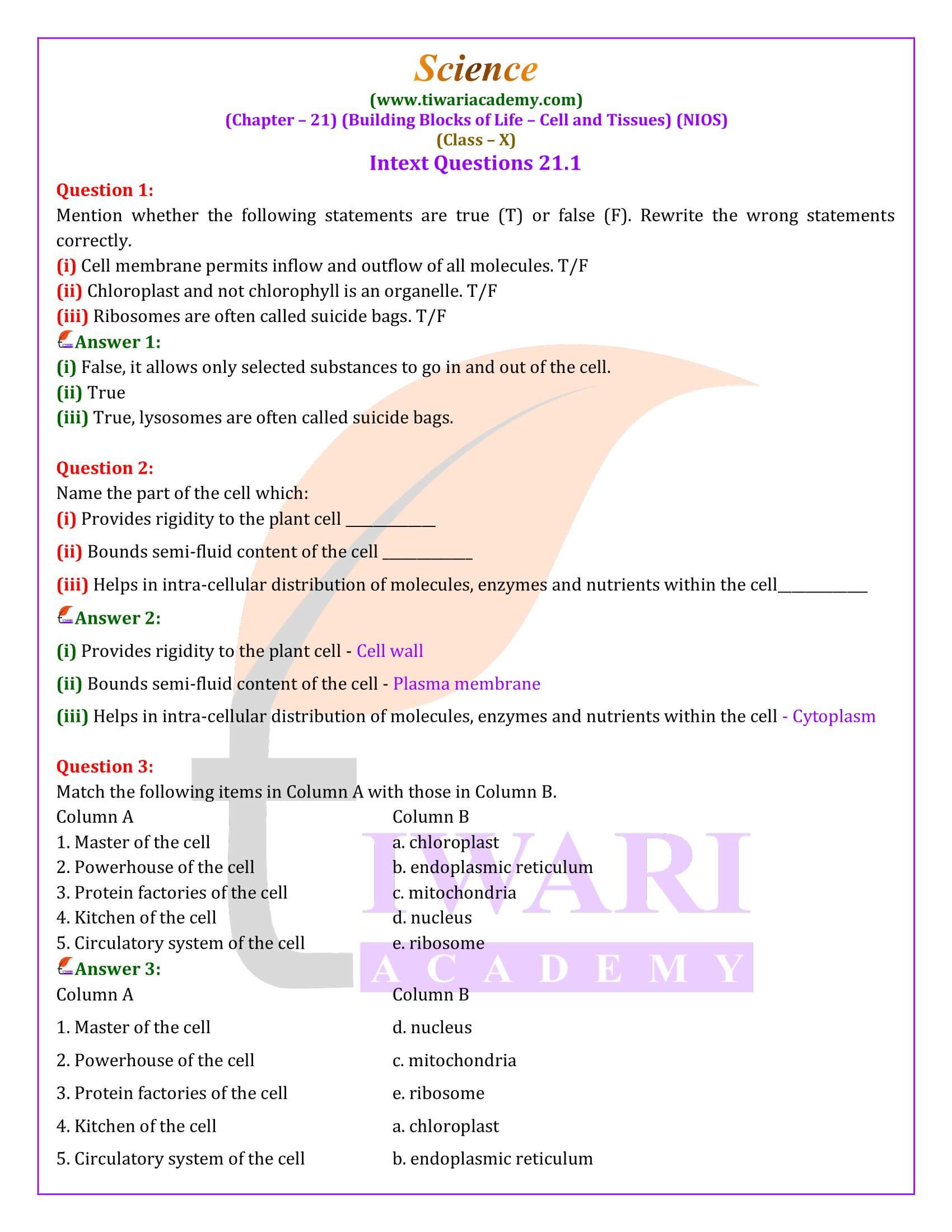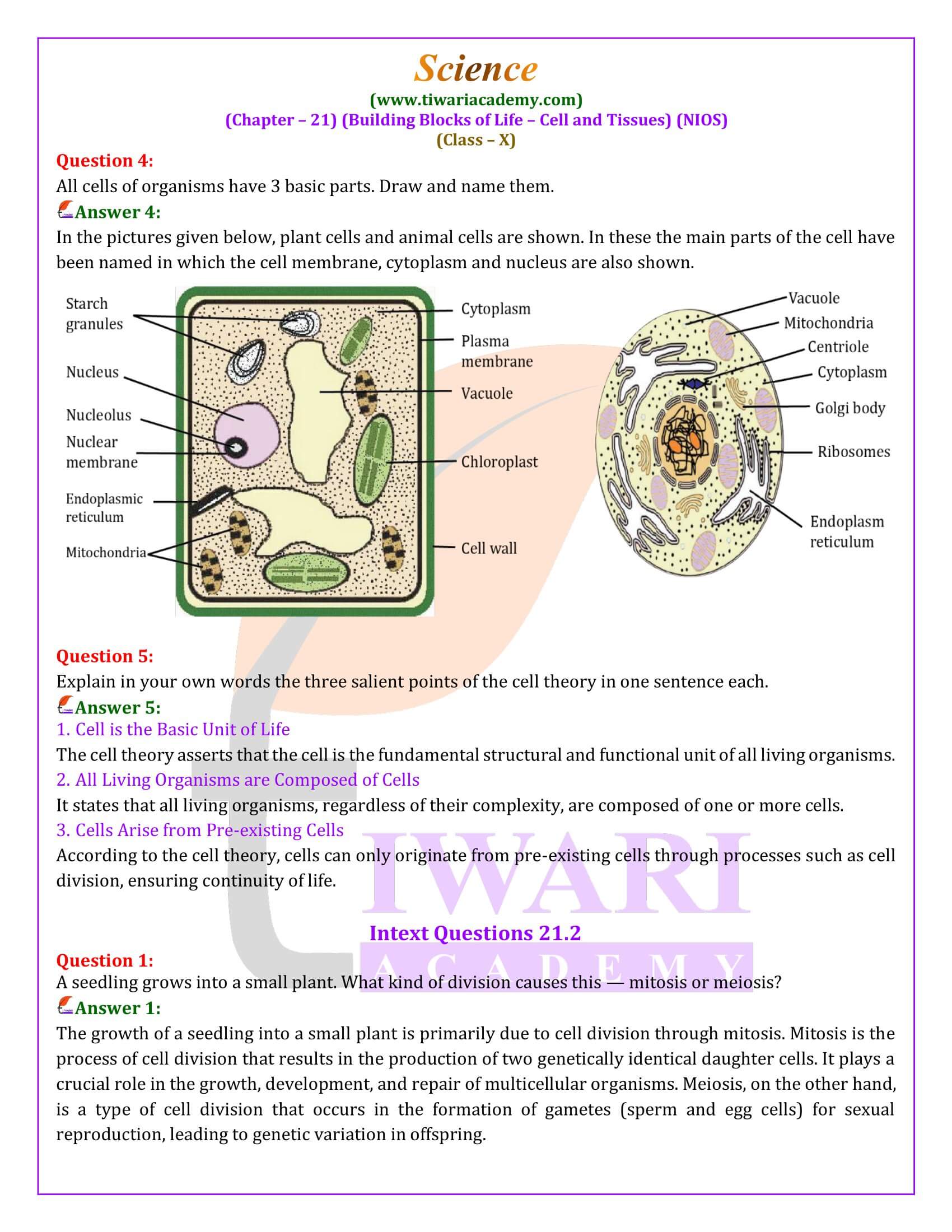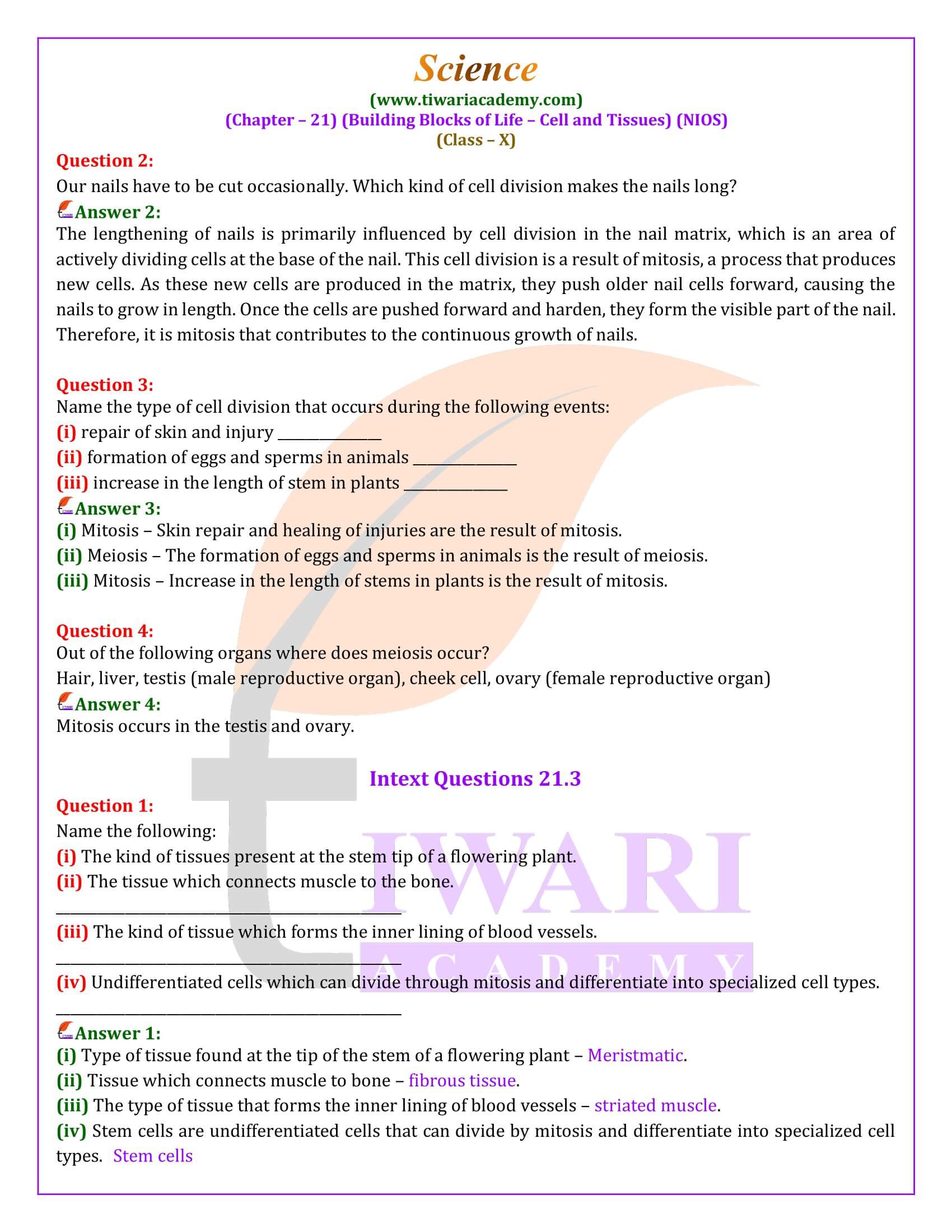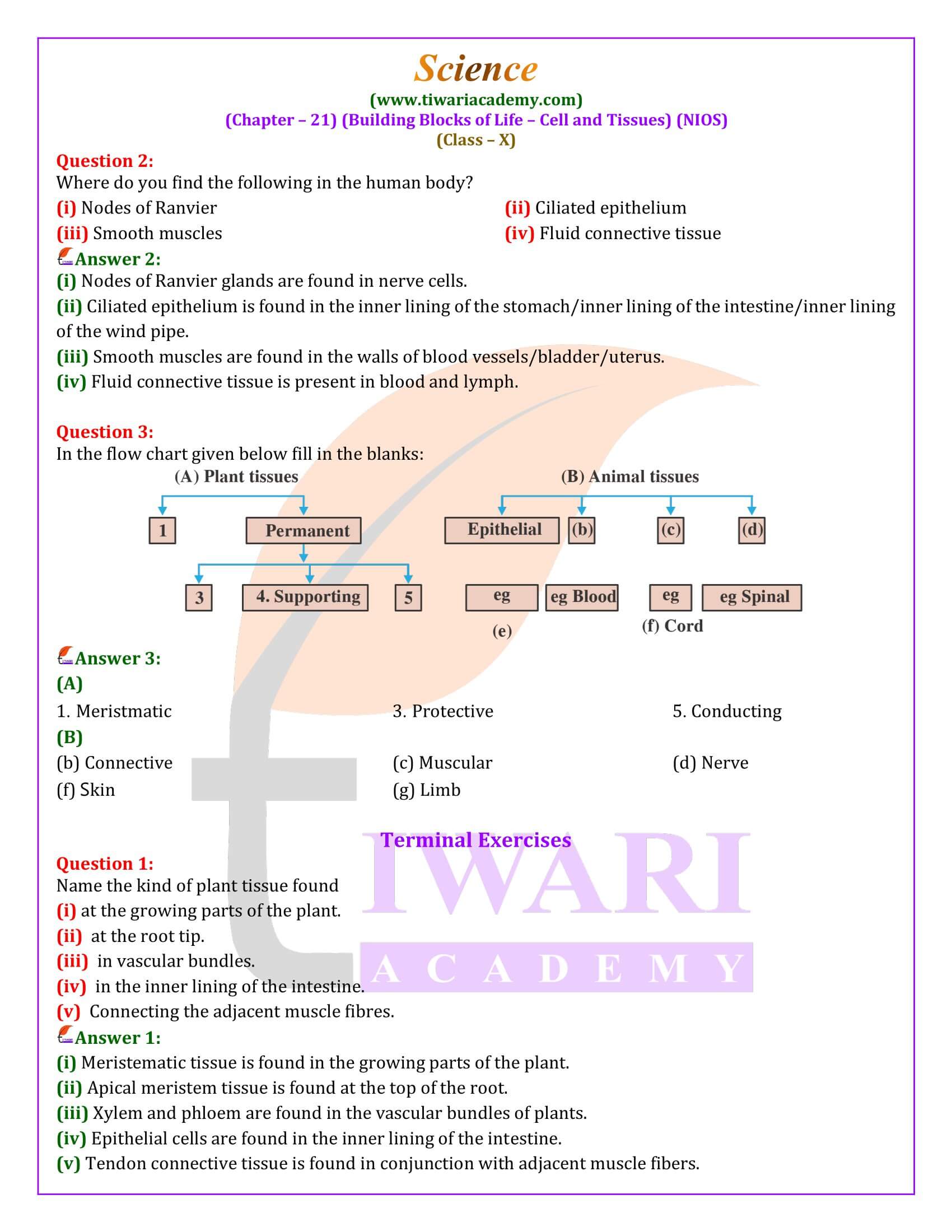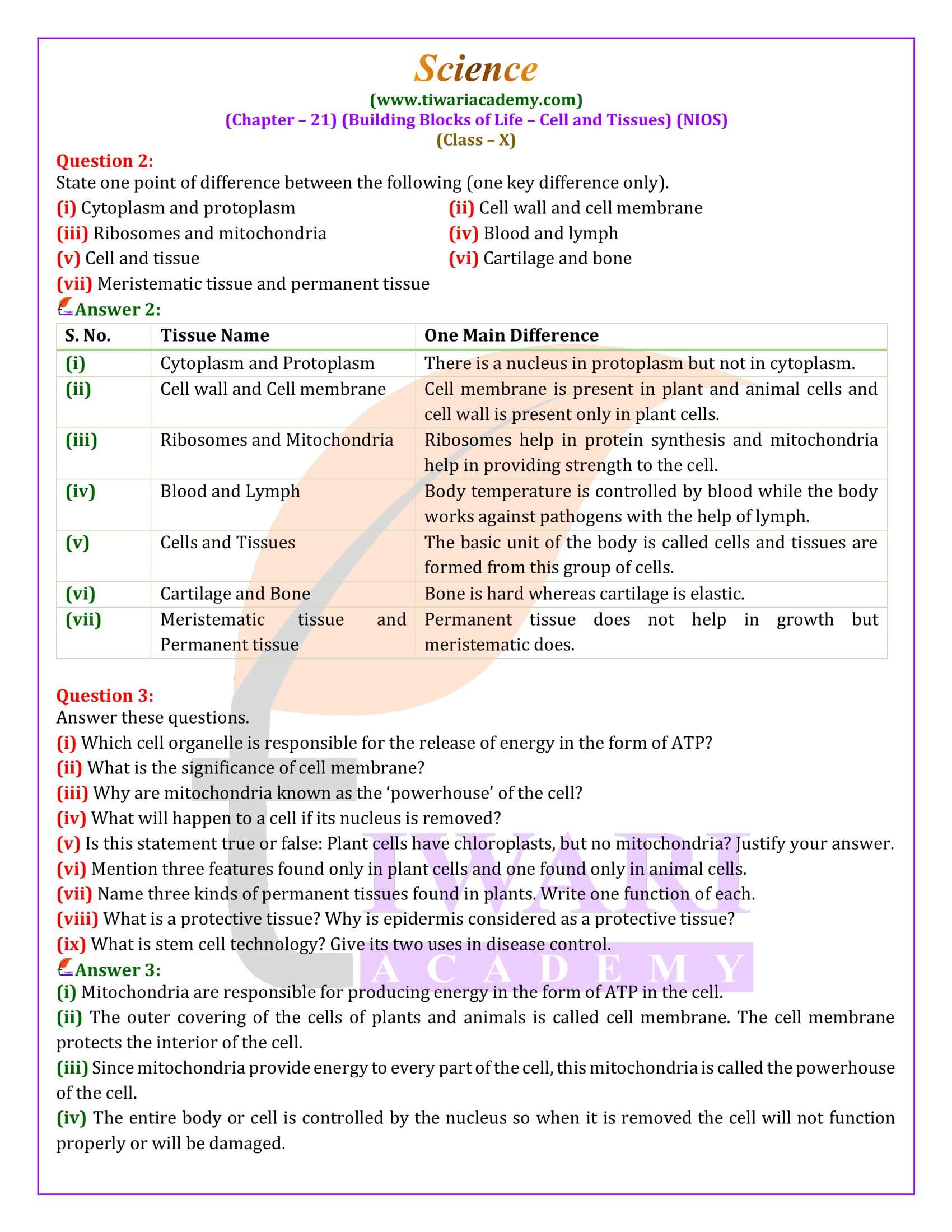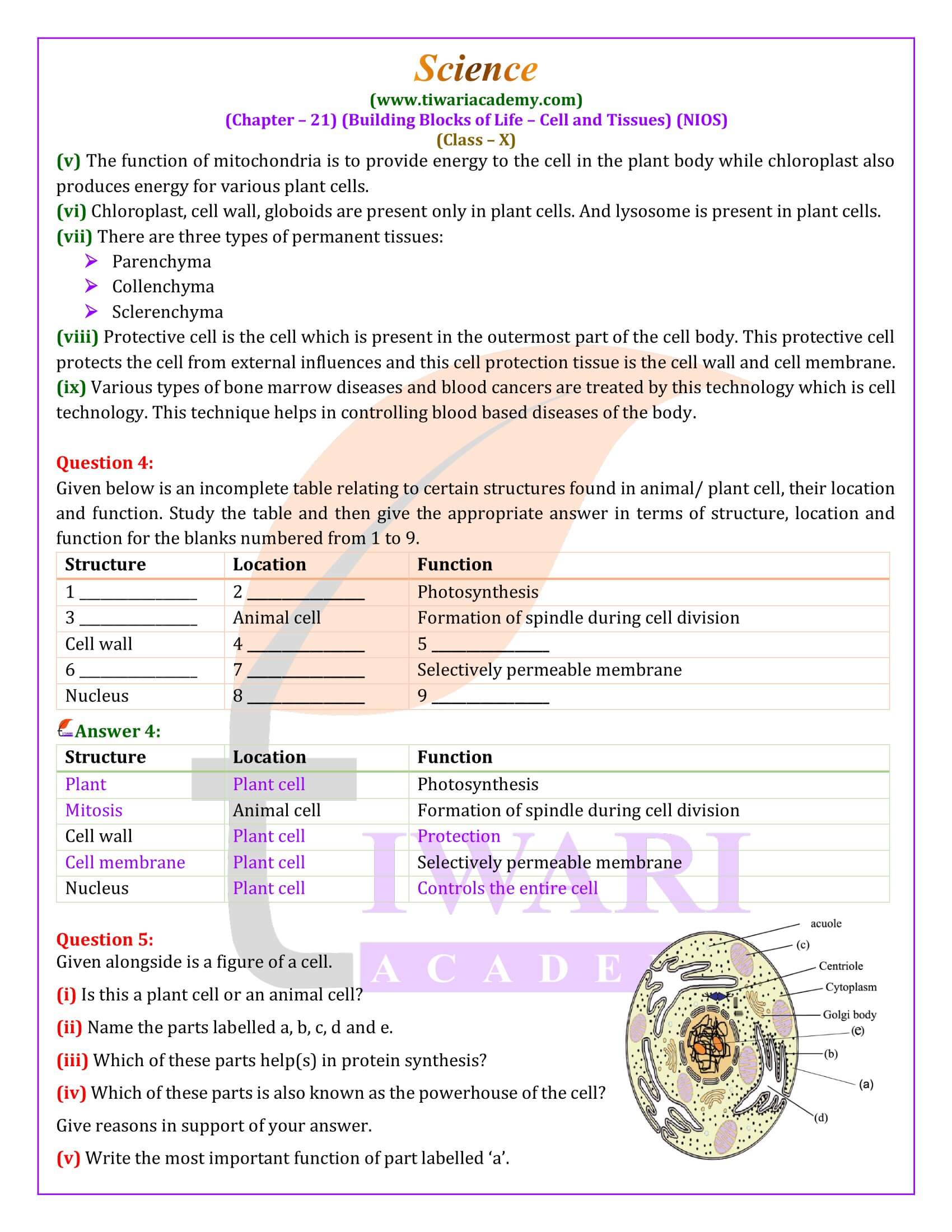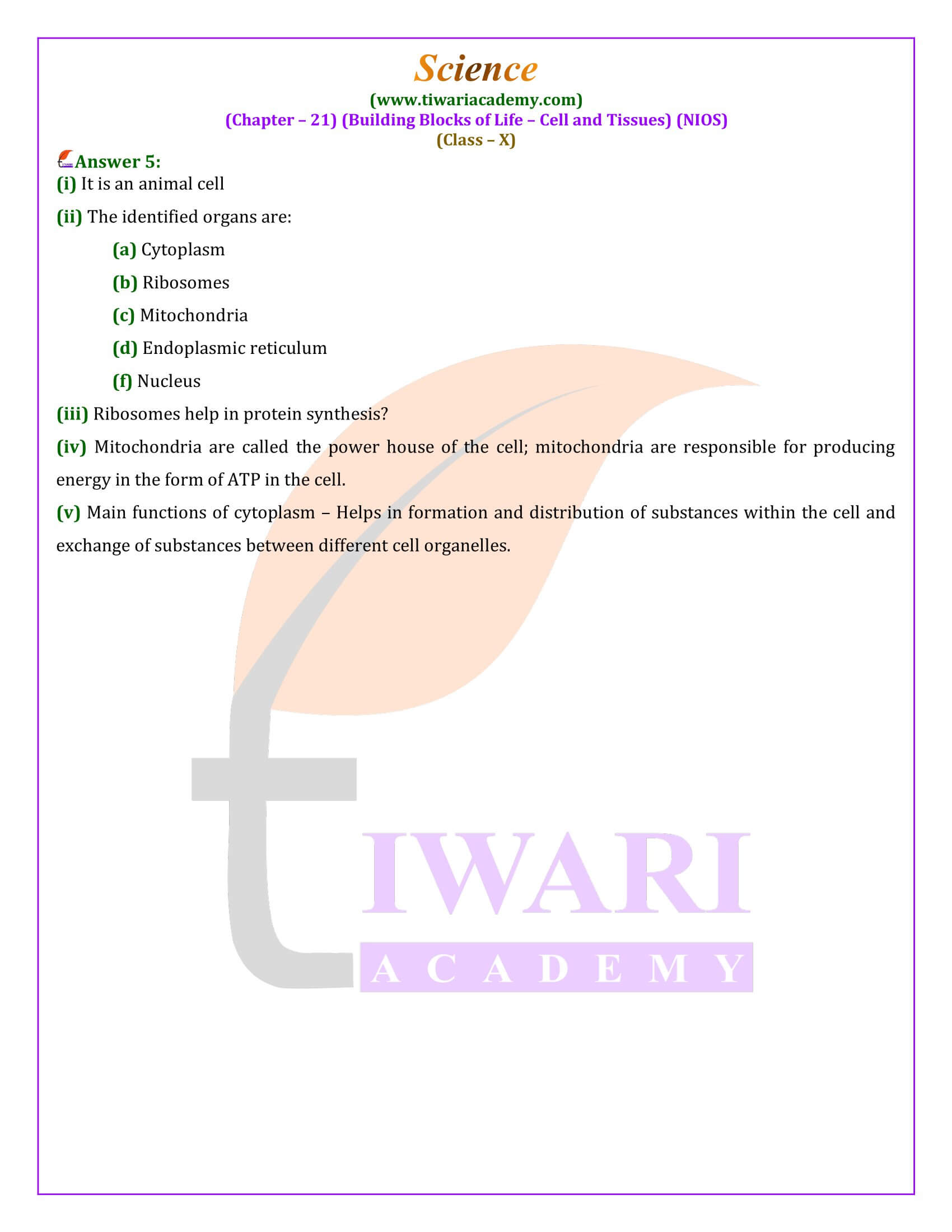NIOS Class 10 Science Chapter 21 Building Blocks of Life – Cell and Tissue in Hindi and English Medium updated for new academic session 2025-26. Get here NIOS Class 10 Science Chapter 21 solutions and question answers in simple language.
NIOS Class 10 Science Chapter 21 Building Blocks of Life – Cell and Tissue
Building Blocks of Life – Cell and Tissue
Introduction to Cells as Life’s Foundation -The study of cells, the fundamental unit of life, forms the basis of biology and medical science. A single cell, often starting as a fertilized egg, undergoes division to eventually form tissues, organs, and entire organisms. This intricate process highlights the cell’s pivotal role in constructing living beings.
The Discovery and Theory of Cells
The discovery of cells dates back to 1665 when Robert Hooke observed a cork under a microscope and noted structures resembling a honeycomb, which he termed “cells”. This observation laid the groundwork for the cell theory formulated by M.J. Schleiden and T. Schwann, stating that all organisms are composed of cells, cells are the basic unit of structure and function in all living beings, and all cells arise from pre-existing cells.
Classification of Cells: Prokaryotic vs. Eukaryotic
Cells are broadly classified into prokaryotic and eukaryotic based on their structure. Prokaryotic cells lack a defined nucleus and organelles, typically found in bacteria and algae. Eukaryotic cells, found in plants, animals, and fungi, possess a nucleus enclosed by a membrane and various organelles that perform specialized functions.
Cell Structure and Organelles
A typical eukaryotic cell consists of a cell membrane, cytoplasm, and nucleus. The cell membrane controls the passage of substances, providing protection and maintaining the cell’s environment. The cytoplasm houses organelles such as mitochondria (the powerhouse of the cell), ribosomes (protein synthesis), and Golgi bodies (processing and packaging). The nucleus, containing genetic material, directs cell activities and growth.
Cell Division: Mitosis and Meiosis
Cell division is essential for growth, repair, and reproduction. Mitosis results in two identical daughter cells, crucial for growth and tissue repair. Meiosis, however, is involved in producing sex cells, ensuring genetic diversity and the continuation of species.
Tissues: Cooperation and Specialization
Tissues are groups of similar cells performing specific functions. In plants, tissues are categorized into meristematic (growth) and permanent (structural support, nutrient transport). Animal tissues include epithelial (covering surfaces), connective (support and binding), muscular (movement), and nervous (signal transmission).
The Role of Stem Cells in Medical Science
Stem cells are at the forefront of medical research due to their ability to differentiate into various cell types and regenerate tissues. Applications range from treating diseases and injuries to understanding developmental processes and testing new drugs.
The study of cells and tissues not only elucidates the structural and functional basis of living organisms but also enhances our ability to treat and understand various biological processes and diseases. This knowledge propels advancements in medical technology, highlighting the profound importance of cellular and tissue studies in science and health.
